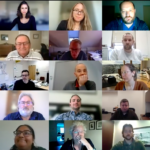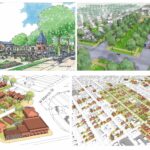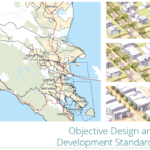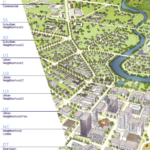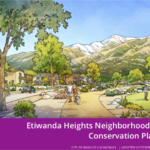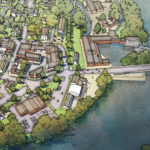Webinar recap: Zoning for the maker economy
 COHAB Space brings together artisans to live, grow, create, showcase, and sell their products in High Point, NC. (Image: COHAB Space)
COHAB Space brings together artisans to live, grow, create, showcase, and sell their products in High Point, NC. (Image: COHAB Space)
This past July, we hosted “Form-Based Codes and Small-Scale Manufacturing,” a joint webinar between Smart Growth America’s Economic Development team and the Form-Based Codes Institute. Speakers discussed how different communities are using form-based codes to support small-scale manufacturing businesses. A recording of the webinar is now available HERE and you can also read a short recap below.
The maker economy is exploding in all types of communities across the nation. Residents are increasingly interested in supporting local businesses and enjoy seeing handcrafted products come to life. It’s these small-scale, homegrown, unique manufacturing businesses like woodturners, candlemakers, and distillers that help communities reimagine sleepy downtowns. They’re breathing new life into vacant storefronts and providing employment opportunities in the neighborhoods people love.
Unfortunately, local zoning codes can be a huge impediment in allowing these funky, craftsy establishments to flourish. That’s why the Form-Based Codes Institute (FBCI) pulled together a group of urban designers and municipal planners that are well-versed in the ways form-based codes can be used to facilitate a healthy maker economy:
Geoff Ferrell, partner at urban design firm Ferrell-Madden, speaks broadly about the ways form-based codes can permit a variety of uses and protect necessary functions within our communities. Both are crucial strategies for allowing and ensuring the healthy, long-lived existence of small-scale manufacturing businesses like shoe makers, metalworkers, or screenprinters in our neighborhoods.
Mike Brennan, president of Near Southside, Inc., focuses on the Near Southside district adjacent to downtown Fort Worth, TX. He explains how the area’s form-based code helped transform a once car-centric neighborhood into one that’s vibrant and pedestrianized. The code encourages a mix of uses—residential, commercial, and arts/artisan businesses across all neighborhoods—and makes adaptive reuse of older industrial buildings easy. Breweries and creative businesses are now clustering together and becoming hotspots for foot traffic thanks to the code’s attention on a walkable public realm, requiring comfortable sidewalks and engaging building facades.
Dan Bartman, senior planner at the Mayor’s Office of Strategic Planning & Community Development in Somerville, MA discusses his community’s efforts in supporting the arts and creative economy. Somerville’s form-based code permits an exhaustive list of creative industries—everything from businesses producing intellectual products like music to ones creating tangible goods like tshirts—in the majority of zones across the city. The code also expands and preserves suitable space for local makers by permitting artist studios in residential areas and by creating “fabrication” districts that allow building construction that’s conducive to the needs of production businesses and cheaper to build.
As these speakers suggest, form-based zoning is becoming more popular in communities that are interested in mixing uses, creating walkable neighborhoods, and supporting locally-owned businesses. Learn more about our small-scale manufacturing program on the Smart Growth America blog and visit the our website for more information on form-based codes.
This webinar was supported by funding from The U.S. Economic Development Administration as part of Smart Growth America’s Small-Scale Manufacturing and Place Based Economic Development Program and in partnership with the Form Based Codes Institute at Smart Growth America.


